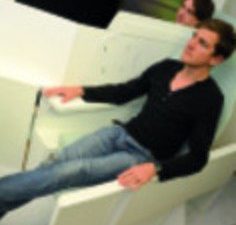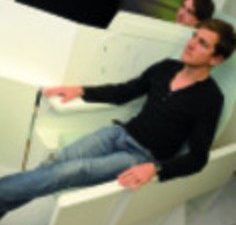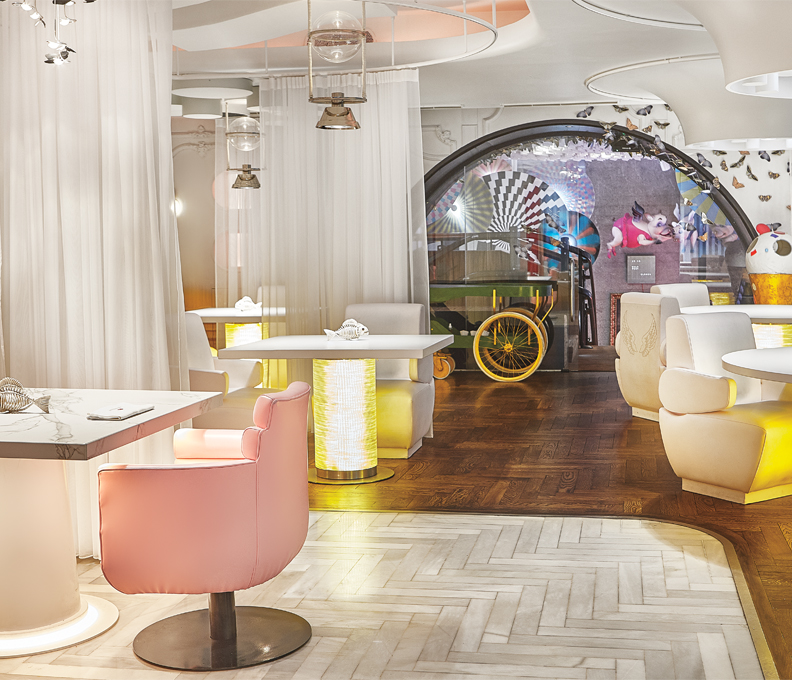Creating the perfect seat
August 31, 2017

The fully-flat bed is deemed essential by corporate travelers able to afford business class. They want to maximize their productivity by sleeping on night flights so they can hit the ground running at their destination.
For those travelers lucky enough to fly business class on long-haul routes, it’s a fascinating game to compare and contrast the range of seats on offer. There are forward-facing seats that recline fully flat. There is the forward/backward-facing “yin-yang” configuration of British Airways. Then there are the various forms of “herringbone” – which takes its name from the appearance of the seating when viewed on a plan from above. Virgin Atlantic still has this, and other carriers have adopted versions of it.
There has arguably never been such a wide choice as there is today. But what all these forms of seating are trying to achieve is a fully-flat bed in the smallest amount of space.
Meanwhile, the airlines recognize that the “real estate” on an aircraft is extremely expensive, and the more room each seat – and each passenger – occupies, the more they will have to charge for the ticket. And everyone shops on price to some extent.
Of course, there are other factors involved, but in terms of the seating, airlines want to offer a fully-flat product with direct aisle access, so you don’t have to climb over the aisle passenger next to you when they are reclined. They also want to strip out as much weight as possible from the design, since every extra pound adds to the fuel bill of flying these aircraft around the world.
Not every airline follows this – Emirates, for example, has introduced a new business class seat in a 2-3-2 configuration, meaning the person in the middle has to climb over an aisle seat. Still, by and large, most carriers are looking to seat designers to come up with something that is lightweight, fully-flat and with hassle-free direct aisle access.
Installing a new cabin is an expensive exercise, not only because airlines have to ground the aircraft to fit the new product, but also because the number of seats is usually reduced as a result. Air France, for instance, has seen the number of seats it can fit between the first two exits on a 777 reduced from 35 (in a 2-3-2 configuration) to 28 in its new 1-2-1 layout. It’s good for travelers in terms of comfort, but the airline will invariably try to pass on the extra cost and charge more per seat, since it has a significant seven fewer business tickets to sell.
Cross-fleet Consistency
UK design studio Acumen Design Associates is responsible for United’s new Polaris seat, currently being flown on its 777-300ER but destined to be rolled out across most of the airline’s wide-body fleet – with some 5,000 of the seats being installed. The project also involved design consultancy Priestmangoode and United’s own in-house team, along with Zodiac Aerospace, the manufacturers of the seat (in this case, from its UK factory in Cwmbran in Wales).
The term Polaris applies not only to the seat but a whole new class of service on board United. The new seat had to be flexible enough to work on aircraft of varying widths, yet also offer a consistent passenger experience. This highlights another truth of the business class world – while aircraft differ in width and in interior design, an airline wants to achieve uniformity across its fleet, both in terms of the advantages to be gained during procurement and servicing, but also because passengers prefer to know what they are getting when they step on board.
In the case of United, this was particularly acute, since the market is currently segmented between high-density business class and “super-business” class. No one is kidding themselves that there is one seat that can satisfy the entire business class arena.
Qatar Airways’ new QSuite, which made its debut between London and Doha in June, is definitely super-business class. In fact, seeing it unveiled at the ITB trade show in Berlin, it could easily rival some airlines’ first class offerings, providing sliding privacy doors and what the carrier says is the first-ever double bed in business class.
According to Qatar Airways’ chief executive, Akbar Al Baker, the airline was “never satisfied in what it offers passengers” and “always wants to be better and [to] improve so that passengers always feel we are above competitors.” He even said that the QSuite would be enhanced in another five years. “We will always get ideas of how to give more space, more comfort, more interaction between groups who want to travel together, but also so they can feel they are in their own territory,” he said.
Yet when asked whether the seating was sustainable across a large wide-bodied fleet, Al Baker’s answer showed how focused the airline was on efficiency. “We try to make sure that we don’t lose numbers,” he said. “So, to give you an example, this seat that we are introducing on the A350 and 777 will still accommodate the same number of passengers. The existing [layout can seat] 42 passengers, and in the same space we will put 42 passengers with this product, so we are not losing on revenue. And we will not raise the ticket price to pay for it.”
Delta Air Lines has also announced a new super-business class suite with doors for its A350 aircraft. Billed as the “world’s first all-suite business class” product, and conceived by Factory Design of London, each new Delta One seat has a sliding door. JetBlue is the only other carrier to offer sliding doors, in its Mint business class, but this feature is only available in select seats.
Delta’s A350 cabin will feature 32 seats split across eight rows, configured 1-2-1. The carrier will primarily use the aircraft on flights between the US and Asia, although the intention is to retrofit the new product progressively to its 777 fleet.
A Delicate Balance
For other carriers, the aim is to improve their products while not pricing themselves out of the market. Ian Dryburgh, chief executive of Acumen, says: “A lot of airlines are struggling to make any money at all, and it’s vanity for them to be flying around some of the seats they are doing. What they need are seats that give them a chance of differentiating themselves but at the same time have a fighting chance of making some money.”
Acumen aims to have its Optima seating – the basis for United’s Polaris seat – adopted by more than a dozen airlines in the coming years. To that end, it has teamed up with Zodiac Aerospace to market it both directly to airlines looking to improve their seating, but also to Boeing and Airbus so that it will be offered as a catalogue option to those buying new aircraft.
“We want to sell it en masse,” Dryburgh says. The Optima’s design is therefore modular, allowing it to be adapted according to what airlines might want without adding too much extra cost or requiring new certification.
Lastly, business class can’t be considered in isolation. The improvements in this cabin, and the extra seats added to economy class as airlines take advantage of new slimline seating to accommodate more passengers at the back of the plane, have led to the widespread introduction of a premium economy option.
For travelers either unable or unwilling to purchase business class seats (many corporations won’t pay for their travelers to fly business), it’s an attractive option, but for the airline, premium economy also runs the risk of cannibalizing business class. They therefore need to be careful not to offer too much in business – and risk pricing out valuable customers – or offer too little and drive people to opt for premium economy instead.
Whichever cabin you choose to fly in, seat technology holds out the promise for a more comfortable journey. While business class is seeing the biggest improvements, the airlines are also hoping that our sky-high expectations will continue to be accompanied by a willingness to pay a premium for the experience. Better have that glass of champagne after all.
By Tom Otley




